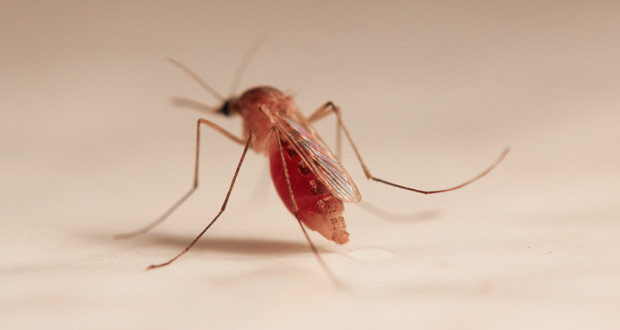
ATLANTA—For the fifth year in a row, the Atlanta area topped Orkin’s “Top 50 Mosquito Cities” list. Texas is the state with the most spots on the pest control company’s 2018 list with seven cities, followed by Florida and Louisiana with four cities each.
“Mosquitoes continue to be a major health concern, especially in the summer months,” Orkin Entomologist Chelle Hartzer says. “According to the CDC, vector-borne diseases like Zika virus and West Nile virus have tripled since 2004. These mosquito-borne diseases may have serious side effects.”
Mosquito season starts when Spring temperatures arrive, and they are most active in temperatures above 80 degrees. Breeding season is usually July through September, while peak West Nile virus season is usually not until late August through September or even October in some areas. Temperatures need to be around freezing before mosquitoes will start to die off for the winter.
“Orkin’s Top 50 Mosquito Cities” list ranks metro areas by the number of new mosquito customers served from April 1, 2017 to March 31, 2018. The list includes both residential and commercial treatments.
Cities with the most new mosquito customers and treatments
|
1. Atlanta |
26. Albany-Schenectady-Troy, N.Y. (+8) |
|
2. Dallas-Ft. Worth, Texas (+4) |
27. Lafayette, La. (+5) |
|
3.New York (+1) |
28. Baton Rouge, La. (+12) |
|
4. Washington, D.C. (-2) |
29. New Orleans, La. (-2) |
|
5. Chicago (-2) |
30. Richmond-Petersburg, Va. (-7) |
|
6. St. Louis, Mo. (+20) |
31. Greenville-Spartanburg, S.C., Asheville, N.C (-9) |
|
7.Houston |
32. Minneapolis-St. Paul, Minn. (-2) |
|
8. Miami-Ft. Lauderdale, Fla. (-3) |
33. Boston (-14) |
|
9.Kansas City, Mo. (+15) |
34. Wichita-Hutchinson, Ka. (+40) |
|
10. Charlotte, N.C. (-1) |
35. Tulsa, Okla. (+14) |
|
11. Detroit (-3) |
36. Hartford-New Haven, Conn. (-5) |
|
12. Memphis, Tenn. (+2) |
37. San Antonio, Texas (+2) |
|
13.Nashville, Tenn. (-3) |
38. Springfield, Mo. (+79) |
|
14. Tampa-St. Petersburg, Fla. (-3) |
39. Abilene-Sweetwater, Texas (+18) |
|
15. Raleigh-Durham, N.C. (+2) |
40. Oklahoma City (+48) |
|
16. Los Angeles (+13) |
41. Waco-Temple-Bryan, Texas (+15) |
|
17. Philadelphia (+4) |
42. Baltimore, Md. (-14) |
|
18. Birmingham, Ala. (+18) |
43. Huntsville-Decatur, Ala. (+10) |
|
19. Orlando-Daytona Beach-Melbourne, Fla. (-7) |
44. Shreveport, La. (-2) |
|
20. Austin, Texas (+17) |
45. Portland-Auburn, Maine (+17) |
|
21. Mobile-Pensacola, Fla. (-6) |
46. Knoxville, Tenn. (-13) |
|
22. Grand Rapids-Kalamazoo-Battle Creek, Mich. (-4) |
47. Cleveland-Akron-Canton, Ohio (-22) |
|
23. Norfolk-Portsmouth-Newport News, Va. (-10) |
48. West Palm Beach-Ft. Pierce, Fla. (-32) |
|
24. Indianapolis, Ind. (+11) |
49. Bangor, Maine (-4) |
|
25. Phoenix, Ariz. (-5) |
50. Harlingen-Brownsville-McAllen-Weslaco, Texas (+21) |
Types of Mosquitoes
The Aedes aegypti (commonly called the yellow fever mosquito) mosquito can carry and spread Zika virus and has been found in more than 20 states from coast to coast. Unlike other mosquito species, Aedes aegypti mosquitoes bite during the day and night.
Culex mosquitoes are in every state and can carry and spread West Nile virus. They are most common at dusk and dawn.
In addition to spreading Malaria, which has been considered eradicated from the United States, Anopheles mosquitoes can transmit dog heartworm and other viruses. They have been found in every state and are most active at dusk and dawn.
Reducing Mosquito Populations
Although the spread of Zika virus in the United States has significantly decreased—from 5,168 cases in 2016 to 433 cases in 2017—it remains a concern as there is no treatment, cure, or vaccine for the virus. One of the best strategies for eliminating mosquito-borne diseases is to reduce populations of the mosquitos that spread them.
Reducing items that attract mosquitoes and actively working to prevent them from reproducing and moving inside properties are the best protection from mosquito bites.
“After mating, females typically seek a blood meal to aid in egg production. She often lays them in standing pools of water,” Hartzer says. “Egg numbers vary from species to species but can be as much as over 100 eggs in a single laying.” Hartzer says there are several recommendations for protecting against mosquitoes.
- Eliminate Mosquito-Friendly Conditions. Any object that has the potential to hold water should be removed or cleaned out frequently, as mosquitoes can breed in just an inch of standing water.
- Clean gutters to avoid rainwater build up. Check for puddles that form on the roof from rainwater, leaking pipes, or even condensation from air conditioners.
- Change water weekly in bird baths, fountains, potted plants and any containers that hold standing water. Keep pool water treated and circulating.
- Trim shrubbery, as adult mosquitoes like to rest in dark areas with high humidity, such as under the leaves of lush vegetation.
- Eliminate Entry Points. Inspect doors and windows for drafts or openings around their perimeters and window air conditioning units, and install weather stripping around doors and caulk around window frames as needed.











